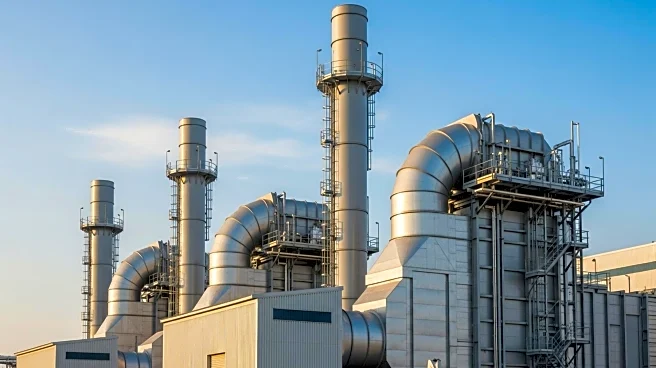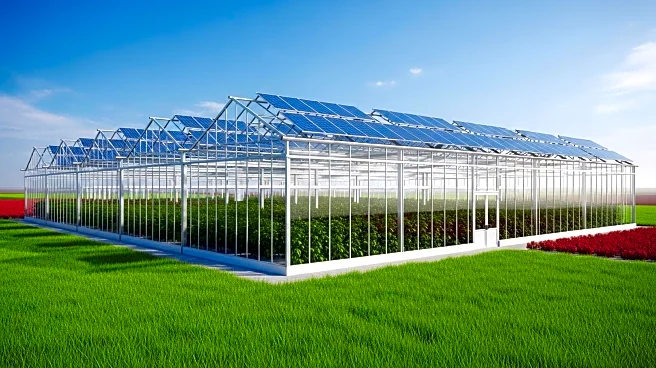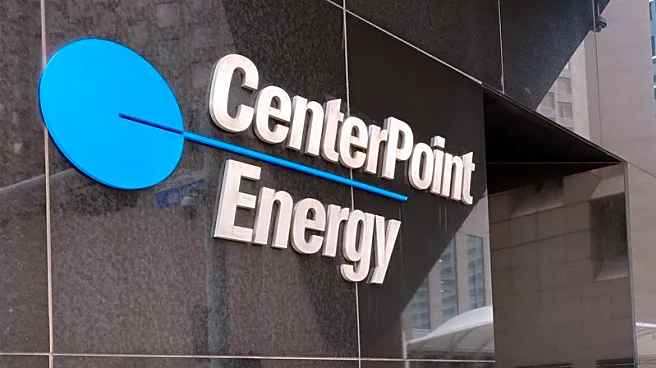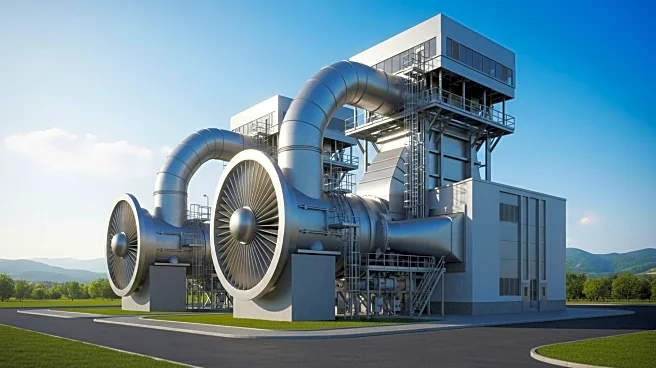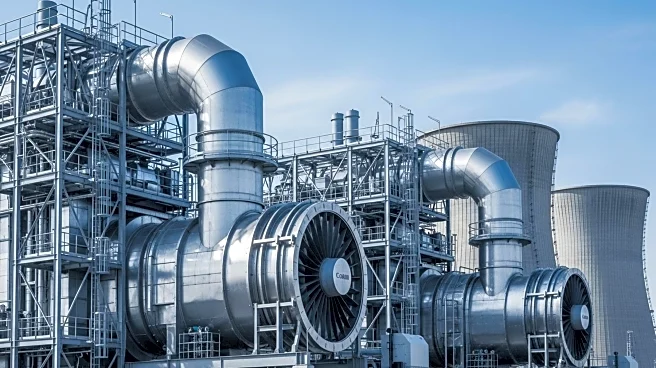What is the story about?
What's Happening?
Xcel Energy has unveiled plans to expand its power generation capacity in Texas and New Mexico by adding new natural gas-fired plants. The initiative includes converting a retiring coal-fired plant to natural gas and constructing a new peaker plant to meet high electricity demand. This expansion is part of Xcel's broader strategy to add over 5 GW of capacity to its generation fleet in the region over the next five years. The plan involves building 17 new generation facilities, which will include 3.2 GW of dispatchable generation and energy storage, alongside nearly 2 GW of renewable energy sources such as wind and solar. The company aims to enhance power grid reliability across its Southwest service territory, supporting its five-year investment plan announced in October 2024.
Why It's Important?
The expansion of gas-fired power plants by Xcel Energy is significant for several reasons. It represents a strategic shift towards more reliable and flexible energy sources, crucial for meeting growing electricity demand in Texas and New Mexico. By transitioning from coal to natural gas, Xcel is aligning with broader industry trends towards cleaner energy solutions, which can reduce emissions and environmental impact. The investment in renewable energy sources further underscores the company's commitment to sustainable energy practices. This development is likely to bolster economic growth in the region by ensuring a stable energy supply, which is vital for businesses and communities. Additionally, the modernization of energy infrastructure can attract further investments and support long-term economic development.
What's Next?
Xcel Energy's next steps involve the implementation of its announced projects, including the installation of Siemens Energy gas turbines to power the new plants. The company plans to retire its coal plant at Tolk Station in Muleshoe, Texas, and replace it with gas-fired capacity. The construction of the new peaker plant in Gaines County is also on the agenda, which will add significant capacity to the region's energy grid. As these projects progress, stakeholders such as local governments, businesses, and environmental groups may react to the changes, potentially influencing future energy policies and investments. The successful execution of these plans will be crucial for Xcel to meet its capacity goals and support regional energy needs.
Beyond the Headlines
The shift from coal to natural gas and the inclusion of renewable energy sources in Xcel's expansion plan reflect broader industry trends towards cleaner energy solutions. This transition may have long-term implications for environmental policy and energy market dynamics in the U.S. The focus on dispatchable power highlights the growing importance of flexible energy solutions in maintaining grid stability amid fluctuating demand. As the energy landscape evolves, Xcel's approach could serve as a model for other utilities seeking to balance reliability, sustainability, and economic growth.
AI Generated Content
Do you find this article useful?
